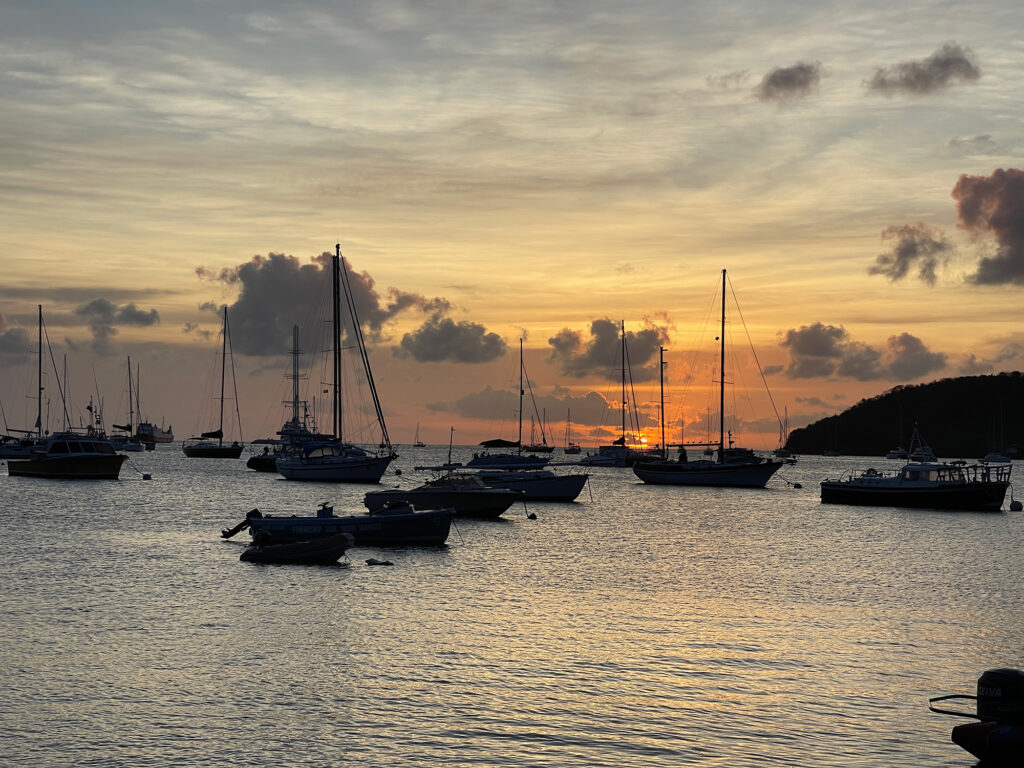
It was March, and I’d survived another winter in Maine. Since the fall, I’d been following Richard Thomas, a fellow Mainer, on Facebook. He’d been sailing his Reliance 44 cutter Strider to Bermuda and then to the Caribbean. By late March, he was holed up at Bequia.
“Got a spare bunk aboard that boat of yours?” I wrote. “I have a need to go sailing.”
I’d met Richard, a building contractor, two years earlier in Antigua’s English Harbour. I was there to cover the Antigua Classic Yacht Regatta, and he’d just arrived on Strider from the Bahamas. We’d been sharing notes ever since.
Our plan from Bequia was to sail down to Grenada for two days, and then island-hop back up the chain, anchoring in a cove or harbor every night. Eventually, we’d visit eight islands—Union Island, Carriacou, Grenada, St. Lucia, Martinique, Dominica, Les Saintes and Guadeloupe—but first, we’d spend a week on Bequia, prepping the boat, provisioning and spending a little time enjoying the tourist life.
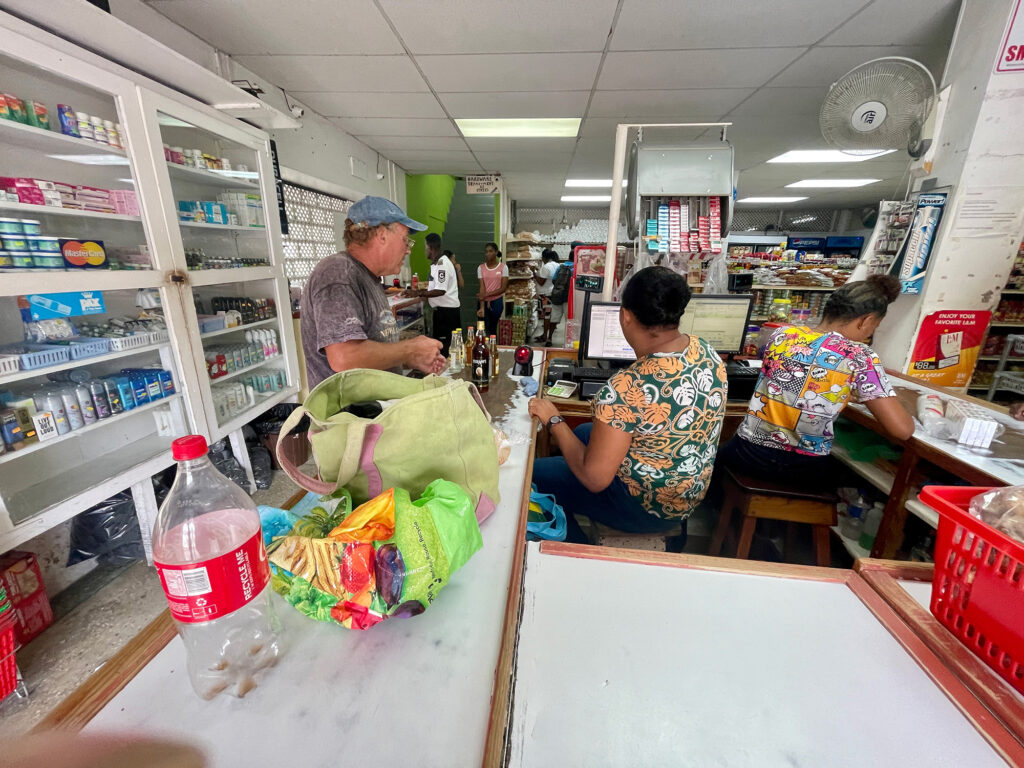
I booked a mid-March flight to St. Vincent, and 20 fellow travelers and I caught the last ferry to Bequia. The hour-long ride got us into Port Elizabeth by 9 that night, and I was aboard Strider with a rum in my hand by 9:30.
Richard had assigned me a bunk in a small cabin aft, near the companionway. It was tight, and with no overhead hatch to scoop in a cooling night breeze. I began looking at the cockpit. It also was a bit tight, but the seats were long and wide enough to stretch out. Nights are warm enough, so only a sheet is needed. I’d brought my own.
An Old Friend
The next morning, Richard and I headed into town. As we approached the dinghy dock, I saw that Bequia hadn’t changed much in 15 years. My family and I had spent part of a season here in 2010, boat-schooling our kids on Searcher, our Bowman 57 ketch.
It was good to be back. The dinghy dock was crowded with another dozen RIBs. Since it was a cruise-ship day, dozens of tourists struggled out of a launch and then lined up dutifully, led like sheep to a half dozen open-air buses bound for a two-hour tour. I knew they’d only scratch the surface. Bequia is one of the smallest inhabited islands in the Eastern Caribbean, but it has a huge reputation in the cruising community. The 5,000 residents are welcoming, and Admiralty Bay is an open anchorage with enough space for 100 yachts, and a cruise ship or two.
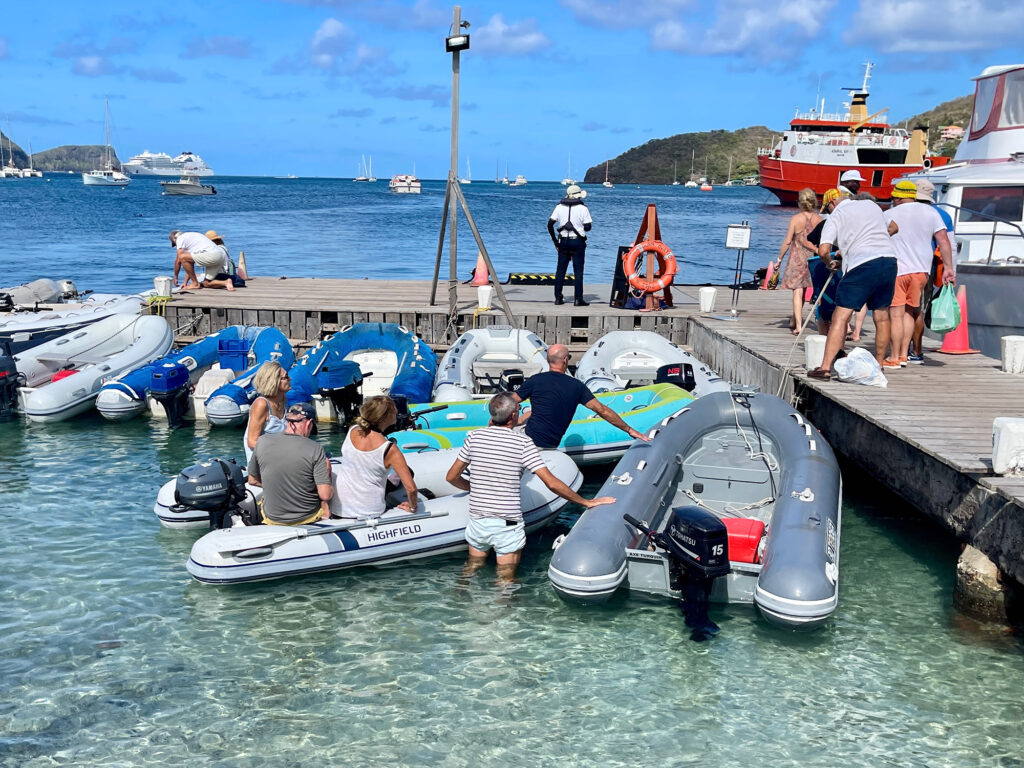
This island has no mass-market resort chains. There are a few small, luxury hotels, including Bequia Plantation Hotel, Bequia Beach Hotel and The Liming Hotel, along with B&Bs and rental spots scattered about the hillsides. In season, though, the anchorage may have more bunks afloat than are available ashore, with most of the boats carrying a well-worn copy of the Sailor’s Guide to the Windward Islands by Chris Doyle.
Richard and I shouldered our shopping bags, dodged the tourists and made our way to the Bank of St. Vincent and the Grenadines, which houses the island’s sole ATM. If there’s a cruise ship in the harbor, the machine will be out of cash by noon. A handful of small grocery stores is also here, but you have to visit them all, as not one has everything. You can stop along the way at an open-air bar for a bottle of Sparrow’s rum, made on St. Vincent.
Shopping for food is a challenge. You don’t go in with a list; you see what’s available and then decide what’s for dinner. “It’s the availability of meat and poultry,” Richard said, pawing through a chest freezer. “That’s the challenge. There’s never any steak, hardly any hamburger, occasionally some pork, but lots of chicken parts, mostly legs, rarely any breast meat.”
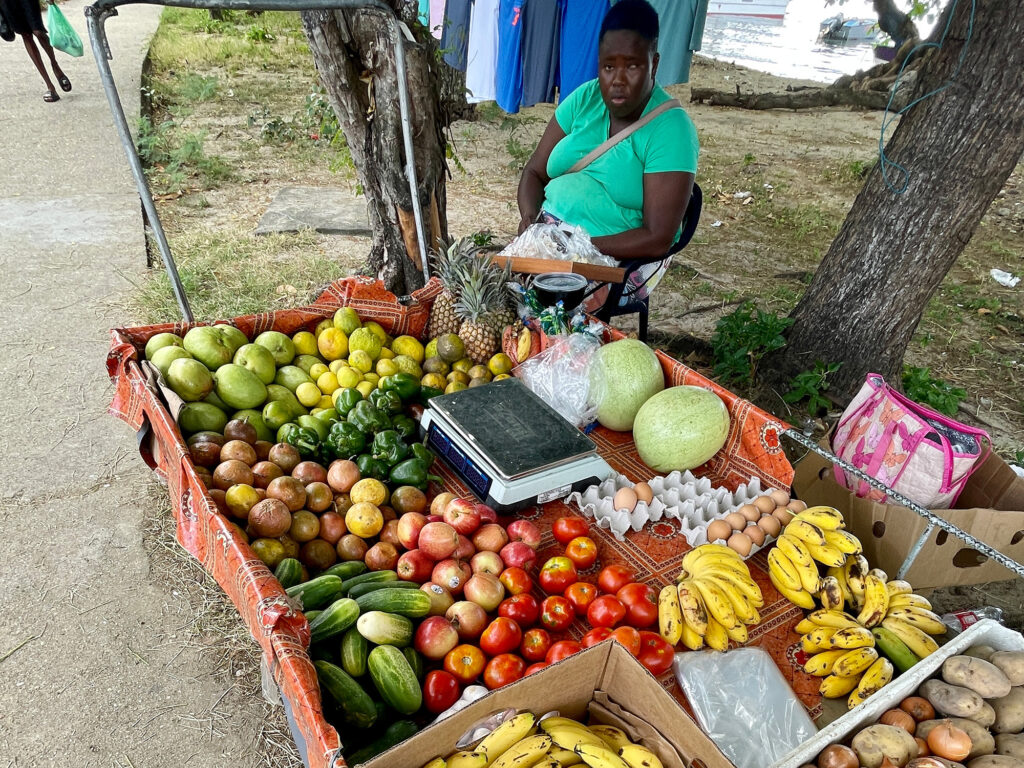
All of the food on Bequia comes from St. Vincent on ferries. Fruit and vegetables are available at open-air fruit and vegetable stands, some no larger than a card table. The covered market was abuzz 15 years ago, full of stalls bursting with fresh food, but as I walked through in March, only two stalls were open. The local entrepreneurs must have discovered that they could simply set up shop on the street and not pay the market rent. Doris’ Fresh Food and Yacht Provisioning is an upscale, air-conditioned store with everything that wealthy expats and visiting sailors desire, from Swiss chocolate to exotic coffees and wine. Doris also has a large frozen meat and poultry section, at a price.
The entrepreneurial spirit is alive on Bequia. The center of Port Arthur is busy with vendors hawking their wares and pushcarts overflowing with produce and other stuff. Customs and immigration is here, in the post office. An outdoor mall is nearby with tables of produce and fruit, crafts and handmade jewelry. At one of the cafes, you can grab a few hours of Wi-Fi for the price of an iced tea or lunch.
Marine chandleries, sailmakers, a canvas shop, freelance mechanics, carpenters, electricians and people who can fix anything are all on the backstreets. There is fuel and water at the yacht club. Daffodil Marine Services has a fuel and water delivery barge, and does laundry, can provide ice, and has a dockside restaurant and guest house. A second fuel barge also makes the rounds in the anchorage.
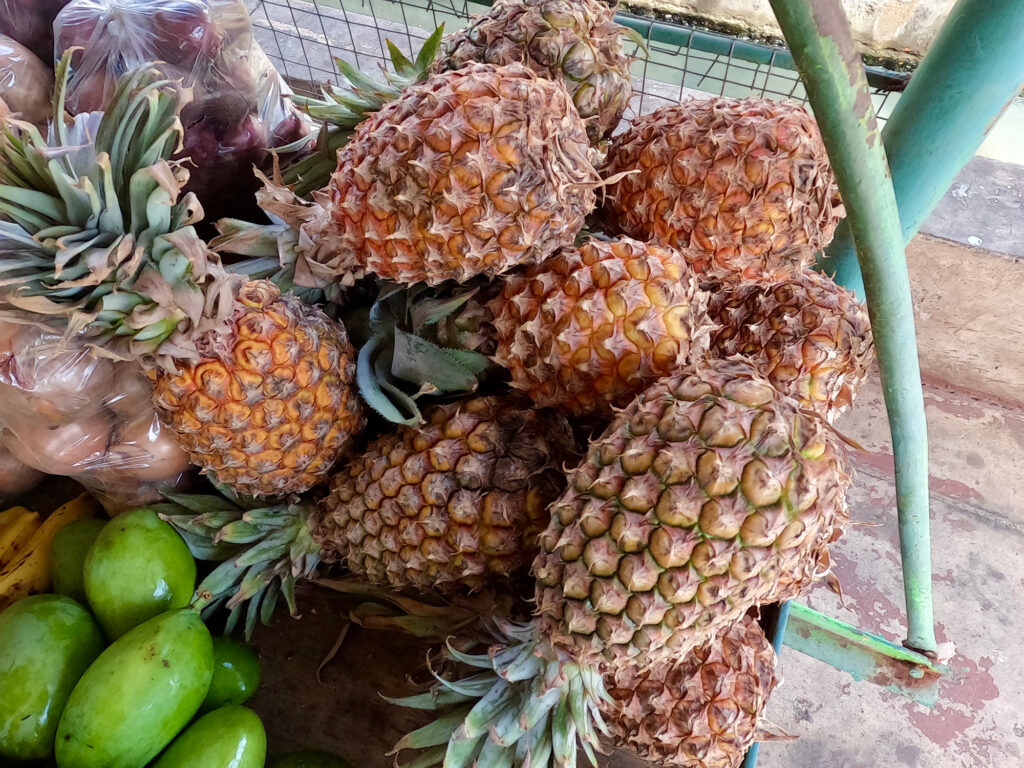
There’s good snorkeling a dinghy ride away, and two dive shops have tours and services. Lower Bay Beach is great for body surfing if there’s a northerly swell running. Hiking trails lead up and over the hills to more beaches. You could spend a month here, as Richard has done.
Years ago, Bequia was known for its Scottish shipwrights, who crafted schooners for the island trade. Some boats hunted whales. After the war, boatbuilding petered out, so the locals turned to building model boats to sell to visiting yachtsmen. Locals still hunt whales today, under an international license. They can kill no more than four in a year. To learn more about the island’s traditions, take the $2 bus ride from town to the Bequia Boat Museum. Outside, under a roof, is a collection of original wooden whale boats, each 30 feet long and built on the island.
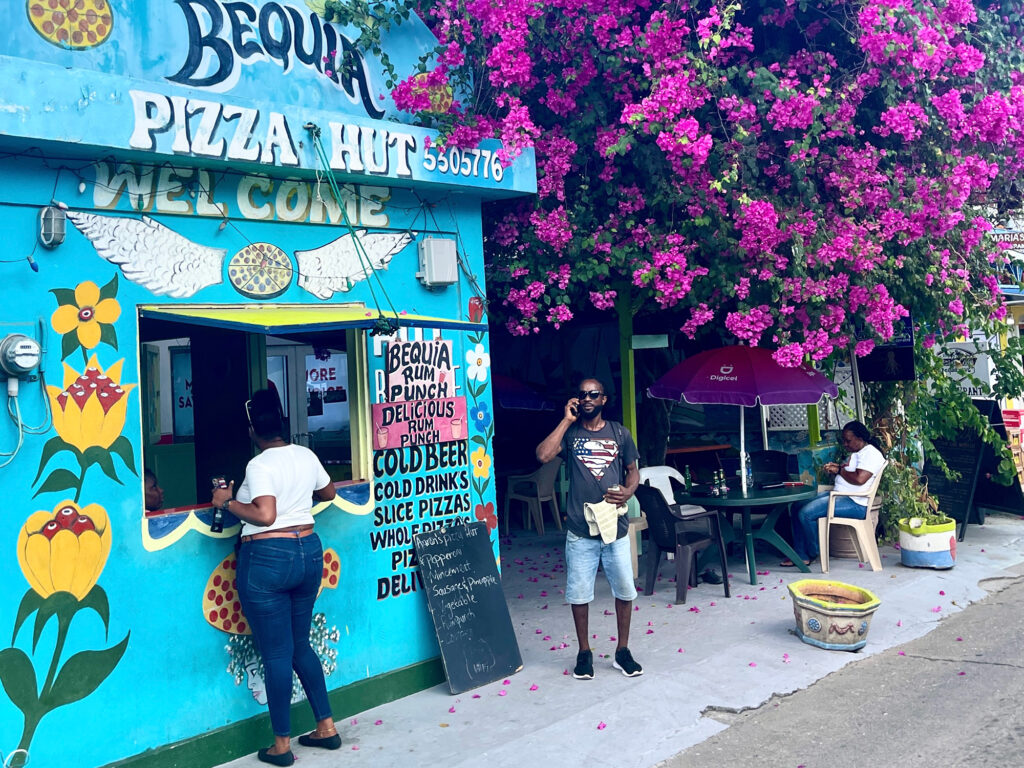
On our way back to the bus stop, we had lunch at the Good Mood Cafe. It’s owned by John and Donna Fisher, an English couple who have been here for 15 years. John was an electrical and plumbing engineer back in the UK. He could fix anything. Now, he has more work than he can cope with, fixing washing machines, dryers, stoves and other appliances. Sitting on their second-story porch for a lunch of freshly made English sausage rolls, it was hard to visualize a nicer spot. A jungle of greenery surrounded us.
Boat Work to Do
Richard and Strider had been anchored in Admiralty Bay for a month, and the prop and hull were becoming a marine garden. They needed scraping. The same was true for the dinghy’s bottom, which we did on the beach. These tasks took up a day or so.
A few days before Easter, we’d re-anchored closer to shore, on the north side of the bay, to get out of a pesky swell. That first night, the band at a nearby bar kept us up until midnight. It wasn’t that they were loud; it’s that they were really bad. When that band folded up, another band just down the beach kept going, until 3.
“I’m not putting up with this,” Richard told me the next morning. “This is Easter weekend. This place is going to be hopping. Let’s get out of here and head south. We can get to Union Island in half a day.”
And that’s what we did.








